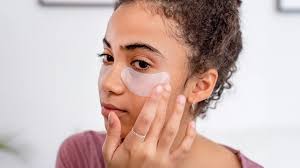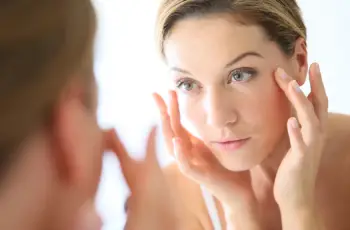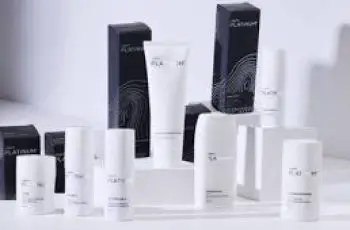
Say Goodbye to Under-Eye Bags: Causes, Prevention, and Effective Treatments
Under-eye bags are a common concern affecting both men and women across a wide range of ages, and they continue to be one of the most frequently sought-after topics in beauty treatments.
Despite being harmless in most cases, many find these puffy shadows beneath the eyes frustrating and challenging to eliminate, especially when they seem to resist even the best skincare.
To truly address this persistent problem, it’s essential to first step back and understand the root causes of under-eye bags, as each underlying reason may call for a unique solution.
Why Do We Get Bags Under Our Eyes?
One of the most frustrating realities is that genetics plays a major role in the formation of under-eye bags, especially if you’ve experienced them since childhood.
If your parents or close family members have naturally puffy eyes or prominent under-eye bags, it’s likely that you’ve inherited this trait and are predisposed to it yourself.
Unfortunately, when under-eye puffiness is caused by genetics, there’s only so much that lifestyle or topical treatments can do to completely erase the appearance.
That said, not all cases are genetically driven—many people develop bags due to environmental factors, health issues, or simple lifestyle habits that are entirely fixable.
Excessive sun exposure can lead to an overproduction of melanin, which causes uneven pigmentation and contributes to discoloration or shadows that make under-eye bags look worse.
While a sun-kissed glow might sound appealing, UV damage often leads to thin, weak skin and worsens puffiness, especially around the delicate eye area.
Another extremely common cause of under-eye bags is fatigue or lack of proper sleep, which makes your skin appear paler, allowing dark blood vessels to show through more prominently.
When you’re not getting enough rest, the fluid under your eyes is not properly drained, leading to puffiness and a heavy, tired appearance that can linger throughout the day.
Eye strain from staring at screens for prolonged hours—whether it’s your phone, computer, or television—can worsen under-eye swelling by increasing blood flow and pressure around the eyes.
Similarly, dehydration affects the skin’s ability to retain moisture and elasticity, leading to dry, sagging skin that contributes to the sunken or puffy appearance under your eyes.
Seasonal allergies or reactions to dust, pollen, pet dander, or even skincare products can also lead to inflammation and puffiness beneath the eyes.
Sometimes, under-eye bags are caused by fluid retention, which occurs when the lymphatic system isn’t draining efficiently—this is especially common in the morning after waking.
Lastly, as we age, the natural collagen and fat under our skin diminish, leading to skin laxity and the inevitable sagging that highlights under-eye bags more prominently.
How to Treat and Prevent Under-Eye Bags
Let’s begin with a surprisingly effective tip: using an extra pillow to elevate your head at night can drastically reduce fluid buildup and improve lymphatic drainage around the eyes.
When you sleep on your stomach or without enough head elevation, gravity can cause fluid to settle under your eyes, leading to more pronounced puffiness in the morning.
Personally, I used to sleep flat on my stomach and struggled with constant bags—until I switched to sleeping on my back with two pillows, which significantly reduced the swelling.
Another easy at-home remedy is applying a cold compress for 10–20 minutes, which helps constrict blood vessels, reduce swelling, and bring down inflammation around the eyes.
Popular options include chilled cucumber slices, a wet flannel placed over your eyes, or even refrigerated spoons—experiment with what feels most soothing and effective for your skin.
You can also enhance this treatment by pairing it with a hydrating sheet mask or gel eye patches to maximize moisture retention and rejuvenation.
Using a high-quality eye cream consistently can deliver visible results over time, especially if the formula includes proven ingredients like caffeine, peptides, hyaluronic acid, or retinol.
Caffeine helps constrict blood vessels and reduce puffiness, while hyaluronic acid deeply hydrates the skin, plumping up fine lines and creating a smoother surface under the eyes.
For an added cooling and de-puffing effect, store your eye cream in the refrigerator—just ensure it’s not too cold to avoid compromising the product’s texture or formulation.
Remember, not all eye creams are created equal, so take the time to research brands, read reviews, and choose one tailored to your specific skin needs and sensitivities.
If allergies are suspected to be the cause of your under-eye issues, it may be time to take an allergy test to identify what’s triggering your flare-ups.
You could be reacting to pet dander, dust mites, pollen, or even specific ingredients in your skincare or makeup products—understanding your triggers is the first step toward resolution.
Testing for food intolerances or sensitivities may also reveal surprising culprits that cause inflammation or fluid retention throughout your body, including around your eyes.
Never underestimate the impact of sleeping with makeup on—this bad habit can clog pores, cause irritation, and lead to puffy eyes and dark circles in the morning.
Make it a ritual to fully remove all eye makeup with a gentle cleanser or micellar water before bed, and always follow up with a hydrating night cream to support overnight recovery.
Prioritize sleep not just in quantity, but in quality—aim for seven to nine hours of uninterrupted rest and create a calming nighttime routine that promotes deeper sleep.
Reduce screen time in the evening to lower blue light exposure, which interferes with melatonin production and disrupts your natural sleep cycle.
Consider supplementing with magnesium or melatonin (after consulting with a healthcare provider) and avoid naps longer than 20 minutes to prevent confusion in your body’s sleep rhythm.
Smoking is a major contributor to under-eye aging, as it restricts blood flow, depletes oxygen in the skin, and breaks down collagen, making bags and dark circles more pronounced.
If you smoke, quitting is one of the most powerful actions you can take—not only to improve your overall health but also to significantly enhance your skin’s appearance and resilience.
Pay attention to your diet—too much salt can lead to water retention, which shows up as swelling under the eyes and puffiness in your face overall.
Try keeping a food journal to track your sodium intake, and opt for low-sodium alternatives where possible, focusing on fresh vegetables, fruits, and whole foods.
Water intake is another crucial factor—if you’re not drinking enough throughout the day, your skin can become dehydrated, dull, and more prone to sagging and puffiness.
Carry a refillable water bottle with you wherever you go and set timed reminders if needed to ensure you’re sipping consistently from morning to evening.
Try to identify common moments when you forget to drink, such as during long meetings or while commuting, and make hydration a non-negotiable part of your daily routine.
Daily use of SPF is a non-negotiable skincare rule—sun damage is a leading cause of collagen breakdown and hyperpigmentation, especially around the eyes.
Use a broad-spectrum sunscreen with SPF 30 or higher every single morning, even on cloudy days or in the winter, to protect your delicate under-eye area from UV harm.
This technique is widely adopted in Korean skincare and forms an essential step in their 10-step skincare routine for maintaining youthful, luminous skin over the years.
If all else fails and your bags remain stubbornly present, consider turning to makeup for a quick fix—invest in a high-quality concealer that’s a close match to your skin tone.
Lightly dab the concealer under your eyes using your fingertip or a sponge, and blend it out for a natural finish—choose a formula with light-reflecting pigments for added brightness.
It’s also smart to keep your concealer in your bag for on-the-go touch-ups throughout the day, especially if you’re heading into meetings, events, or photo opportunities.
Final Thoughts
Under-eye bags can be a persistent and annoying problem, but they’re not impossible to manage—especially when you understand what’s causing them and how to treat them effectively.
By incorporating small but consistent changes—such as elevating your head at night, drinking more water, using SPF, and being mindful of skincare—you’ll likely see gradual improvement.
Even if genetics plays a role, there are always techniques to minimize their impact, and with the right habits and products, you can restore brightness and confidence to your gaze.
Whether you go the natural route or rely on a touch of concealer, remember that self-care is a journey and every small step contributes to a fresher, healthier appearance.


